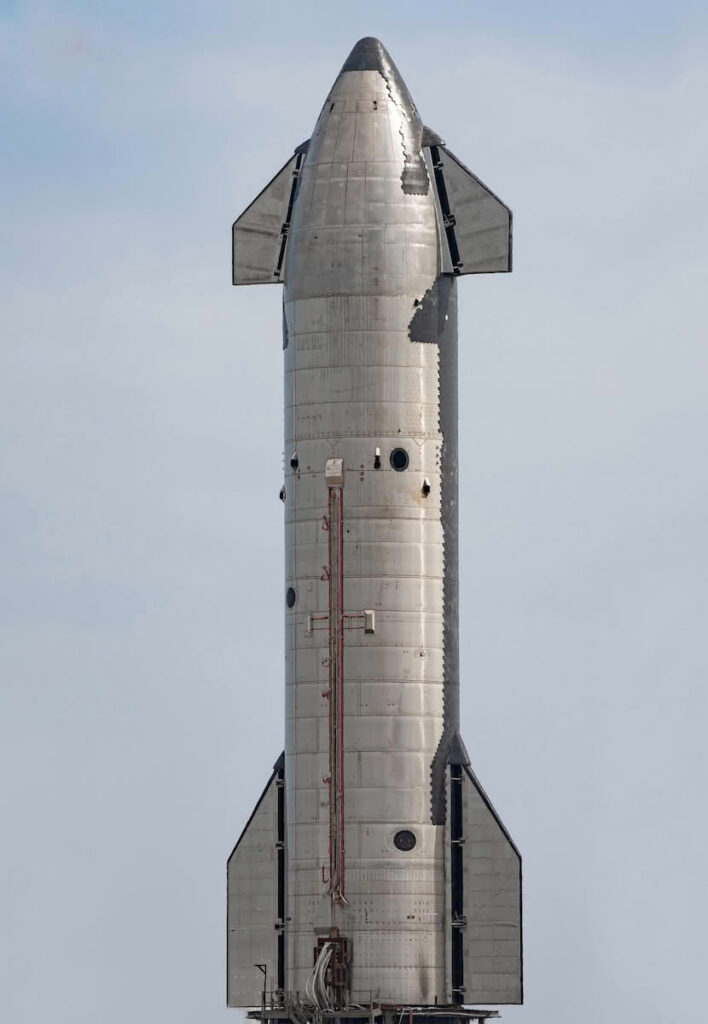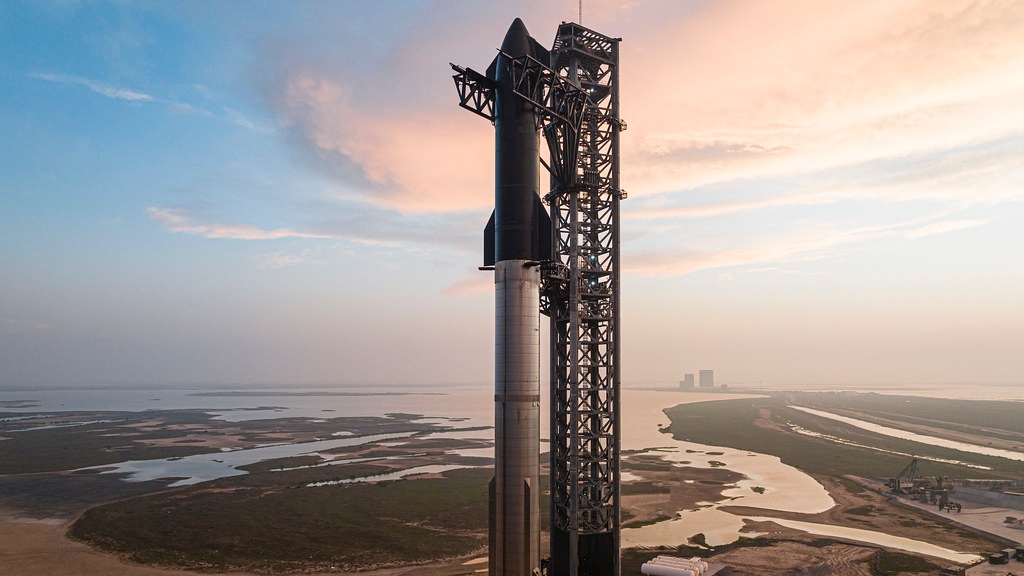Big news has just landed in the world of space exploration. SpaceX has officially unveiled the root causes of the Flight 9 anomaly, detailing both the failures and the solutions that now set the stage for Flight 10. With FAA clearance now confirmed, the company is targeting August 24 for its next launch.
At the same time, Blue Origin is making significant strides, adding new Mars payloads to its upcoming New Glenn rocket. And in a major policy move, the White House has signed a new executive order that could reshape the entire landscape of commercial spaceflight.
Let’s break down all these major developments in today’s detailed update.
Flight 9: A Turning Point for SpaceX and Starship
The Importance of Flight 9
Starship Flight 9 was never just about reaching space. It was a deliberate stress test, an experimental mission that pushed boundaries. While it didn’t end in a flawless landing, it succeeded in gathering critical data that has now shaped a better and safer version of the vehicle.
With the FAA now closing its mishap investigation, SpaceX has the green light to proceed with Flight 10. The findings from Flight 9 highlight SpaceX’s core philosophy—to fail fast, learn faster, and move forward with confidence.

What Went Wrong with Flight 9?
Super Heavy Booster’s Descent Issues
The Super Heavy booster, designed to return safely after propelling Starship into orbit, encountered unusual challenges:
- Higher angle of attack: SpaceX confirmed that the booster descended at a peak angle of 17°, much higher than planned.
- Intentional engine tests: Only 12 engines were used during descent, and mid-descent flips were executed to push the design limits.
But during the landing burn, an “energetic event” occurred near the aft section of the booster. Telemetry cut off at 6 minutes and 22 seconds into the flight, around 1 km above sea level.
Cause: Structural stress on the fuel transfer tube allowed methane and liquid oxygen to mix, triggering ignition and the ultimate destruction of the booster.
Corrective Measures for the Booster
SpaceX’s response was quick and effective:
- V1 boosters: Future flights will use a lower angle of attack to minimize aerodynamic stress.
- V3 boosters (in development): Will feature reinforced fuel transfer tubes, ensuring structural integrity even under extreme flight profiles.
These changes are aimed at enhancing long-term reusability while continuing to gather data under more controlled conditions.
Starship Upper Stage: Nose Cone Pressurization and Fuel Tank Leak
Methane Leak Detected Mid-Flight
About three minutes into Flight 9, sensors in the nose cone detected a steady rise in methane. By the five-minute mark, there was a noticeable pressure imbalance between the nose cone and the main fuel tank.
Despite this, Starship continued its mission and reached second stage engine cutoff (SECO)—achieving its planned orbital velocity.
The Root of the Problem: Structural Damage
Post-mission analysis showed:
- A damaged dome on the main fuel tank allowed methane leakage into the nose cone.
- This triggered a series of cascading failures, including attitude control issues, payload deployment abort, and eventual mission termination.

Critical System Response
Once the nose cone venting resumed, liquid methane leaked into the nose section, plunging nearby sensors and components into cryogenic temperatures. The onboard system initiated pacification, which:
- Shut down the engines
- Vented remaining propellant
- Disabled Starship’s re-ignition capability
The spacecraft entered re-entry with an off-nominal attitude, eventually losing contact 46 minutes into the mission, above the Indian Ocean.
Starship Flight 10: Ready for Liftoff
Launch Date Set for August 24
With Flight 10 on the horizon, SpaceX is targeting 6:30 PM Central Time on August 24 for liftoff. This will be a crucial test for all the fixes implemented post-Flight 9.
Major Upgrades Include:
- Reinforced forward dome diffuser
- Enhanced methane containment systems
- More stable descent trajectory for Super Heavy
- Better thermal shielding and fault-tolerant controls
Ship 37, believed to be the vehicle for Flight 10, is undergoing final preparations and integration.
If you’re excited, drop a “Go 10” in the comments and stay tuned—this mission could change everything.
Blue Origin’s Bold Move: Entering the Mars Arena
While SpaceX continues to perfect Starship, Blue Origin is carving out its own path in interplanetary exploration.
NASA’s ESCAPADE Mission
Scheduled to launch on September 29, the ESCAPADE mission (Escape and Plasma Acceleration and Dynamics Explorers) will study Mars’ magnetosphere using Blue Origin’s New Glenn rocket.
This marks New Glenn’s first deep space mission—a huge step for Blue Origin.
Mars Telecommunications Orbiter (MTO)
Blue Origin also secured NASA’s Mars Telecommunications Orbiter (MTO) project, set for launch in 2028. This orbiter will serve as:
- A next-generation relay hub
- A platform for high-speed communications
- A critical link for future Mars rovers and human missions
Powered by Innovation
- Blue Ring platform: A powerful launch platform with hybrid propulsion and AI-assisted navigation
- Edge computing: Enables autonomous science operations on Mars
- Flexible launch windows: Thanks to onboard propulsion and advanced orbital mechanics
This bold move sets up a rivalry between Blue Origin and SpaceX, both now in direct competition to dominate Mars exploration.

White House Executive Order: Faster Commercial Launches
In a surprise policy twist, President Donald Trump signed an executive order on August 13 aimed at supercharging commercial spaceflight in the United States.
Key Objectives of the Order
- Streamline launch and re-entry approvals
- Cut back on redundant environmental reviews
- Facilitate new spaceport construction
- Support emerging tech like orbital refueling and in-space manufacturing
Agencies Involved
- Department of Transportation
- NASA
- Department of Defense
- Office of Space Commerce
This coordination is meant to reduce bureaucratic delays and support rapid innovation in the private space sector.
Controversy and Backlash
Not everyone is on board. The order’s potential to bypass state-level environmental protections has sparked serious debate.
- FAA Administrator Brian Bedford: Praised the order for “cutting red tape.”
- Center for Biological Diversity’s Jared Margolus: Called it “reckless,” arguing it threatens communities and ecosystems.
It’s a classic space policy dilemma—speed versus sustainability.
Final Thoughts: The Road Ahead
With Flight 10 on the launchpad, Blue Origin’s Mars plans unfolding, and U.S. policy shifting to encourage faster private missions, we are witnessing a transformational moment in space history.
Here’s what to watch:
- Will Flight 10 succeed where Flight 9 stumbled?
- Can Blue Origin meet Mars’ challenge with New Glenn and MTO?
- How will the executive order change commercial launch dynamics?
Whether you’re team SpaceX or team Blue Origin—or just a fan of space—we’re entering a golden era of rapid innovation, interplanetary exploration, and commercial competition.
FAQs
1. What caused the failure of SpaceX’s Flight 9?
Flight 9’s failure was primarily due to structural stress on the Super Heavy booster’s fuel transfer tube and a methane leak in Starship’s nose cone, which caused critical system failures during descent and payload deployment.
2. When is SpaceX’s Flight 10 scheduled to launch?
Flight 10 is targeted for August 24th, with the launch window opening at 6:30 p.m. Central time.
3. What fixes has SpaceX implemented after Flight 9?
SpaceX plans to reduce the descent angle of the Super Heavy booster and reinforce the fuel transfer tube on the next generation of boosters. For Starship, they redesigned the forward dome diffuser and improved methane containment systems.
4. Did Flight 9 meet any of its mission objectives despite the failure?
Yes, Flight 9 achieved second stage engine cutoff (SECO) and reached planned orbital velocity before the anomaly forced mission termination.
5. What is the significance of the FAA closing the Flight 9 mishap investigation?
FAA clearance indicates that SpaceX has adequately addressed the Flight 9 issues and is authorized to proceed with Flight 10, marking a major regulatory milestone.
6. What is Blue Origin’s New Glenn rocket?
New Glenn is Blue Origin’s heavy-lift rocket designed for orbital missions, including upcoming Mars payload launches.
7. What Mars missions is Blue Origin supporting?
Blue Origin will launch NASA’s ESCAPADE mission in 2025 and the Mars Telecommunications Orbiter (MTO) in 2028 using its New Glenn and Blue Ring platforms.
8. What is NASA’s ESCAPADE mission?
ESCAPADE is a mission to study the magnetosphere of Mars and will be Blue Origin’s first interplanetary payload.
9. What role will the Mars Telecommunications Orbiter play?
The MTO will act as a communication relay hub between Earth and Mars, enabling faster and more reliable data transmission for future robotic and human missions.
10. How does the new executive order signed by President Trump impact commercial spaceflight?
The executive order aims to accelerate commercial launches by streamlining regulatory approvals, reducing environmental review delays, and supporting new spaceport construction.
11. What controversies surround the new executive order?
Critics argue that the order may sideline important environmental protections, potentially risking ecosystems and communities in the push for faster commercial launches.
12. How is SpaceX addressing the methane leak detected in Flight 9?
SpaceX redesigned and strengthened the diffuser in the nose cone and reinforced methane containment systems to prevent future leaks.
13. What does “angle of attack” mean in the context of the Super Heavy booster’s descent?
It refers to the angle between the booster’s descent trajectory and the airflow, which affects aerodynamic stress on the vehicle.
14. Will Flight 10 use the same booster design as Flight 9?
Flight 10 will use upgrades on the current booster fleet, with V3 generation boosters in development featuring a fully redesigned fuel transfer tube.
15. How does Blue Origin’s Blue Ring platform differ from New Glenn?
Blue Ring is a spacecraft platform designed for high flexibility and efficiency, incorporating hybrid propulsion and advanced AI for Mars missions, complementing New Glenn’s heavy-lift capabilities.
16. Why was Flight 9’s payload deployment aborted?
Payload deployment was aborted due to damaging pressure loads inside the nose cone affecting the payload door mechanism, a direct consequence of methane leakage.
17. What are the long-term goals for SpaceX’s Starship program?
The goal is rapid reusability, enabling frequent and cost-effective access to orbit and beyond, with Mars colonization as the ultimate ambition.
Read More:
- Tesla Model Y L: new features that make it better than the standard Model Y
- Tesla Model Y L officially launched: price, features, and more
- Tesla FSD V14 to include key improvements for Cybertruck
- FAA clears SpaceX for Starship Flight 10 after probe into Flight 9 mishap
- Comprehensive Tesla Model Y L insights shared by early reviewer

